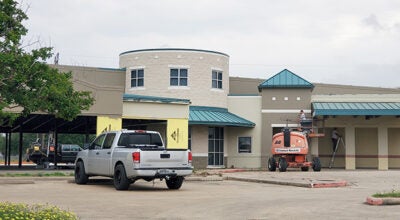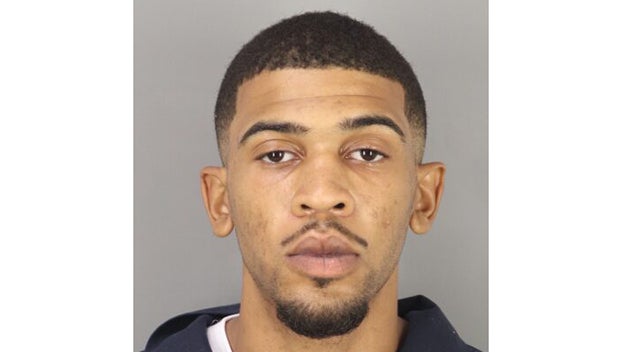Nederland Ave forum gives out more info to public
Published 12:22 pm Monday, February 6, 2017
The City of Nederland hosted its second public forum to discuss the proposed Nederland Avenue Project Thursday evening at its City Hall. City officials, staff, business owners and others were in attendance.
City Manager Chris Duque, Schaumburg & Polk, Inc. Vice President Rick Bourque and Director of Public Works Steve Hamilton hosted the forum.
“As early as 2014, we identified the need for the Nederland Avenue Project,” Duque said. “In September, the City proposed two separate studies for it: one for the drainage and one for the road.”
“Up to today, no decision other than the funding for the study has been made,” he said.
Since October, the project has been broken into two potential projects: the full scale project that would cost between $17 to $18 million and have a timeframe of 30 to 36 months and the smaller, or “narrowed Scope” project, would cost an estimated $6 million and have a timeframe of four to six months.
“The city council needs to make a decision one way or the other regarding the project,” Duque said.
The full-scale project would cover pavement, drainage, underground utility, private utility and functional improvements.
According to Duque, Nederland Avenue was originally built as a two-lane spur in the 1940s and had two outer lanes added onto it in 1963. However, the job resulted in uneven surfaces and driving surface issues.
In the late ‘90s, the Texas Department of Transportation (TxDOT) performed an asphalt overlay that was not up to many residents’ standards.
“It went really badly,” Duque said of TxDOT’s job.
Additionally, the change in drainage plans would have the improvements to pipes moved along 12th Street as opposed to Nederland Avenue. Bourque said Jefferson County Drainage District 7 also preferred they go that route if they went forward with the project.
In fact, Duque said the city had already started working on improvements with the aforementioned pipe system along S. 12th Street some time ago.
“If you look at it as project A through Z, we already did A; now, we just need to do B through Z,” Duque said.
When discussing underground utility like water and wastewater systems, Duque advised that if the city were to address the whole system, they would have to address the old pipes, too.
“It would be beneficial to do it then instead of five to 10 years later.”
Duque explained how breaking parts of a new road to fix issues with old underground utilities would create new issues with the road itself.
“It would create driving issues long term,” Duque said. “The thought process on the long term (project) would be to replace what is already underground.”
In regards to private utilities, the overhead electric, telephone and cable wires that cross Nederland Avenue would be marked for improvement and placed in a conduit that runs underground.
“Some (wires) would stay, but not all of them,” Duque said.
Duque highlighted the crossing of Nederland Avenue and 27th Street where Hurricane Ike money made “significant aesthetic improvements to the intersection.”
Duque said Entergy and AT&T would run conduits underneath the street and Entergy would repair and/or replace the wooden electric poles along the avenue.
“We would replace the leaning wooden poles with metal poles,” he said.
In regard to functional changes, Bourque pointed out the 158 driveways along the affected strip and a TxDOT traffic estimate of 10 to 15 thousand vehicles daily on Nederland Avenue as points to contend with.
“The lane widths are adequate, but there’s no room for widening,” he said.
Additionally, Bourque said contractors would need to put nine inches of concrete into the new road for long-term life; most areas of the street currently have six inches.
The narrowed scope project would include pavement, drainage and functional improvement and repairs, but it would eliminate the underground and private utility work of the full scope project.
“We would focus mainly on the road and drainage,” Duque said.
Diana LaBorde, president of the Nederland Chamber of Commerce, asked what the lifespan of the current road was.
Duque responded, “We don’t know the day it happened, but we know it has expired past its lifespan.”
Bourque agreed, saying they’ve feared what might have occurred if an ice storm came this way.
In response to LaBorde and other business owners’ concerns regarding interruptions to their businesses, Duque replied, “It would be inconvenient, but you won’t lose access to the road and driveways.”
“It would last half an hour to an hour,” Bourque said of the pavement milling that would occur in front of a business.
Hamilton agreed, saying it would be a slow-go, but that they would still have access.
In discussing the importance of communication and having contingencies, Duque said,
“If the contractor is working and finds something unexpected beneath the surface, they are required to immediately contact the city.
“We want to minimize interruptions. We want to be very responsive with this.”
LaBorde asked if there would be any business interruptions with the narrowed scope project.
“There will be some interruptions, but nowhere near the magnitude of the full scope project,” Duque said.
It was made clear, though, that the Narrowed Scope Project would still reduce the number of lanes down to two with narrowed lanes.
“That’s why we’d try to educate the people and encourage them to take different routes,” Bourque said. “We would need to minimize it so that only people who needed to go along Nederland Avenue would go.”
Duque gave an example of parents taking alternate routes to drop off their kids at Central Middle School instead of going down Nederland Avenue. It would help decrease the traffic on the street.
Anna Dattalo, a concerned citizen, raised the issue of supply access and open communication between business owners, the contractor and the City.
“There will be communication,” Duque said.
Dattalo is married to the owner of A&B Outdoor Equipment on Nederland Avenue.
In further discussion on the lifespan of the shorter term overlay project, Duque estimated several years.
“Six million will get you 10 to 15 years,” he said, in regards to the price of the shorter project. “Then, in 10 to 15 years, we may have to have this discussion all over again.”
Billy Neal, Nederland councilmember, expressed optimism on the narrowed scope lifespan, though.
Neal reasoned that if the job that was done in ’99 by TxDOT was not done correctly, it still lasted for 17 years. So, he reasoned, if the city and contractor “did it right” this time, the lifespan should last even longer.
However, Bourque countered, saying, “It’s not a final fix; it’s a 10-year fix.”
And there appeared to be that risk of more money being spent down the line if anything went wrong with the short-term project.
“One of the worst things you can have is laying down a new street, and then a year later, you have to go back and saw-cut it to open it to fix a busted water pipe,” Duque said.
Hamilton likened the shortened work of the Narrowed Scope Project to a gamble, with the surface work being new but the old underlying pipes and utilities being more of an unknown factor.
“It’s not a bad gamble. I mean, we haven’t seen a whole lot of notable pipe issues,” he said. “But you just don’t know how long that would last.”
Duque made clear that both projects, long and short term, did not include the placement and/or improvement of sidewalks.
“There’s no right of way to widen the streets or room for the sidewalks,” he said.
Duque iterated that a decision by the council needed to be made this month and complemented the city staff for doing good work with the consulting firm.
“But we need input from the community,” he said. “There are absolutely going to be some headaches with this. But, we’re going to do the best we can moving forward.”
Duque said they would reach out with city and staff to help business owners and those affected by the construction in what way they could.
Meanwhile, the topic of communication became relevant again as LaBorde brought up the desire for long term communication between all parties involved, suggesting a website for business owners that would have regular updates from the contractor on what they are doing and when at any given time.
While officials appeared understanding of that, Bourque noted that there was only so much the contractor could do.
“We need to find the right balance of cost and communication,” he said.
Duque said the City would have staff going door-to-door to notify owners and residents affected by the construction.
“We’re talking interruption, not shutdown,” Duque said in regards to the shortened project.
In response to Dattalo and Nederland Mayor Dick Nugent’s suggestion of a contact person between business owners, the contractor and the city, Duque and Bourque said there would be multiple meetings for the contractor to be communicative with business owners.
“We’re going to try to make this as smooth as possible,” Duque said.





